Muscat used to be the place to buy spices, but now it’s all about the oil. There is a LOT of money in Oman, but I’m not sure how well distributed it is. In this way I thought it might be like Brunei. It was. Sort of.
The first stop, upon leaving the ship, was the bazaar in Mutrah. Mutrah is one of the three parts of the city of Muscat.
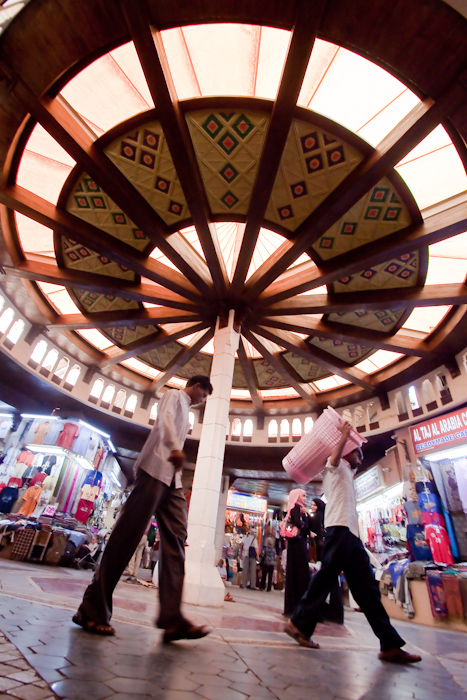
The bazaar was only passingly interesting, considering all the other markets I’ve visited.
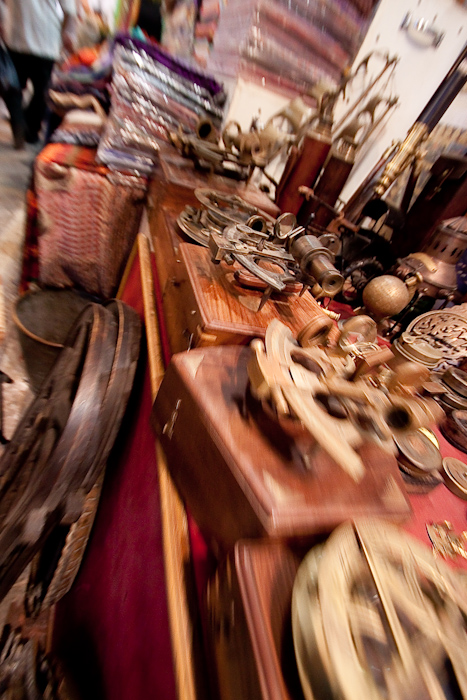
I thought “What else is there to do for a few hours in Oman?” I looked for some kind of tourist information or office or excursion provider who could do all the thinking and planning in exchange for money. The only place I found was a boat trip to watch dolphins and snorkel. A nice idea, but the only way they could portray dolphins was through unconvincing photoshopping, so I was suspicious any dolphins had ever visited the water around Oman.
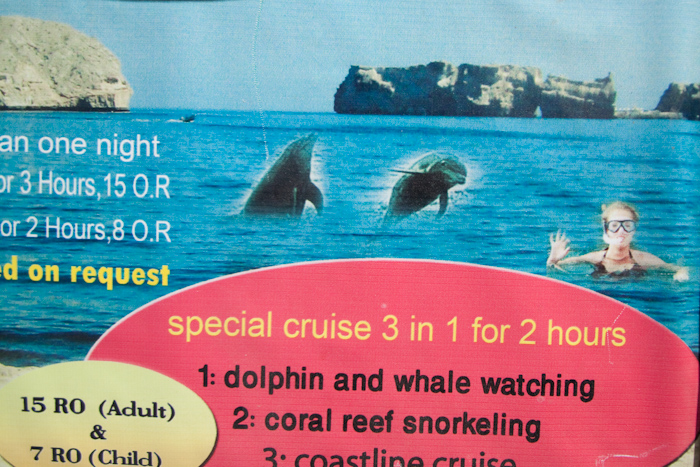
So instead I thought I’d take a taxi over to the “old city” part of Muscat. The conversation with the first taxi driver went something like this:
“How much is it to Muscat?”
“Thirty dollars.”
“Very funny.”
The conversation with the second taxi driver went something like this:
“How far is it to Muscat?”
“About 3 km.”
“So that should only cost five dollars.”
“Ten dollars.”
“Let’s go!”
There is a lesson here.
The taxi driver dropped me off at the market place in Muscat. As you can see, there wasn’t a whole lot of trading going on.
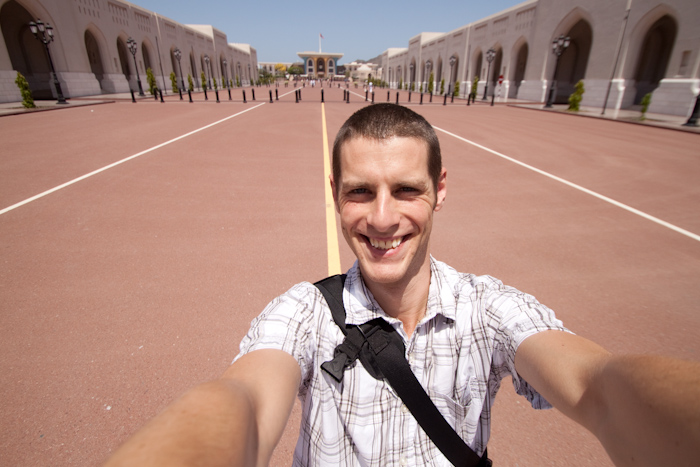
Now, let’s compare Muscat to Brunei. The Sultan of Brunei has the world’s largest residential palace ever built. The place is huge. But it’s way outside the city, hidden behind trees. The city itself has plenty of stupid buildings, and prestige projects, all paid for by the sultan, but the old part of the town is still a thriving community. There is a huge water village, as well as a modern city center on land.
The sultan’s palace in Brunei.
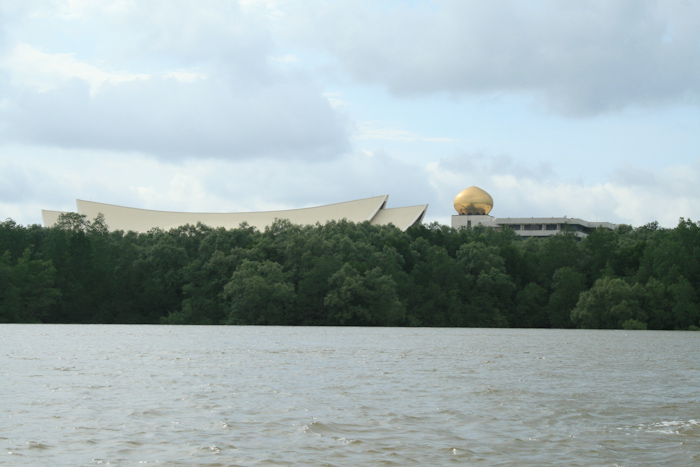
The water village in Brunei.
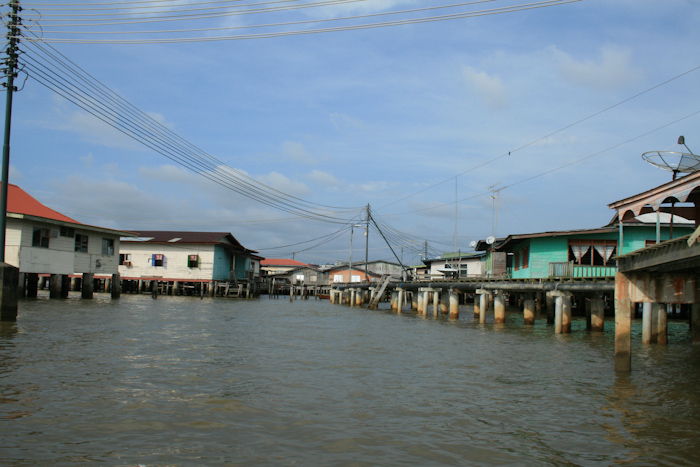
One of the many large building projects in Brunei.
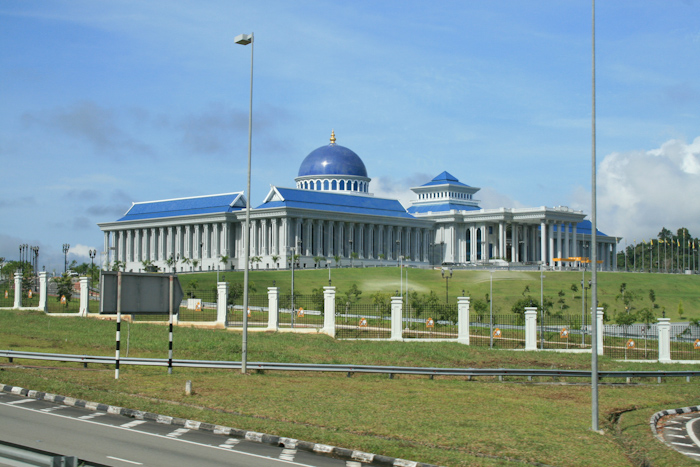
Which brings me Muscat. There was once a thriving city, nestled between high cliffs and the sea. A castle at either end of the bay protected the harbor. But then the sultan wanted a new palace. The ENTIRE city was cleared, and that prime waterfront real estate was given over to his palace.
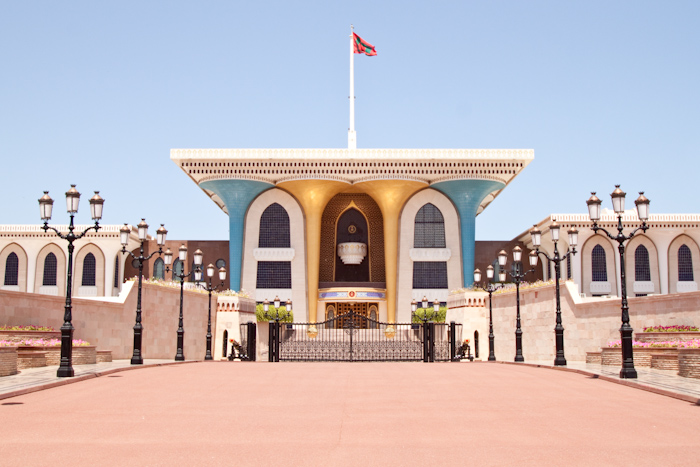
The palace from the other side.
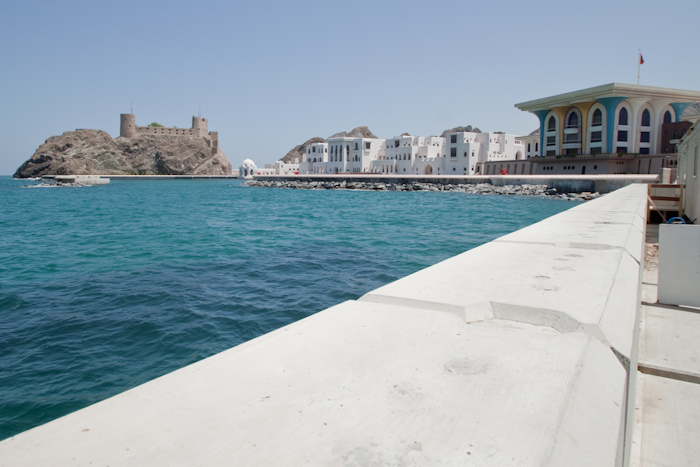
The worst thing about this? I haven’t used the word residential. Nope, he doesn’t even live here. The palace is only used for international receptions.
The rest of the city has nothing but embassies, government ministries and (I think) a single museum. And a mosque or two. But that’s it. I walked around for a while, and the place is a ghost town. Nobody lives there. And there’s nothing to see except shiny new plastic buildings.
The buildings might not actually be made out of plastic, but they look like it.

The castles on either side of the bay are still used by the military, so I wasn’t allowed to take any photos. Then I checked out the city walls. They immediately stood out to me, not for their historical appearance, but for the way they look overly functional, even for use today.
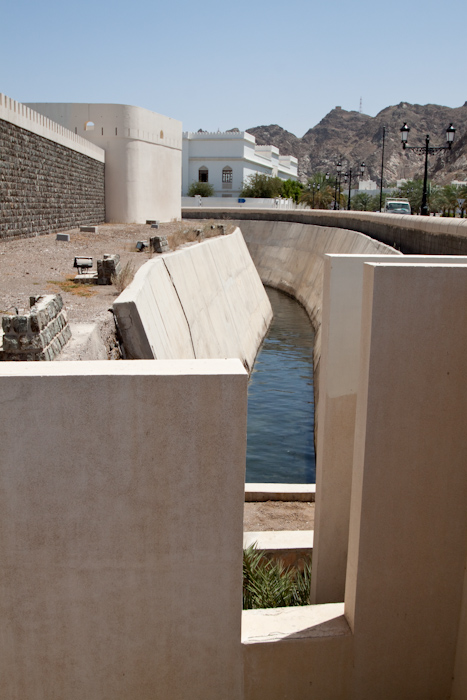
And that’s when I realized the entire “old city” is practically a military installation. When the oil runs out, the population of Oman will say “Where’s all our money? Hey, it’s all inside that palace!” They’ll try to storm the city, but won’t make it past the moat before the snipers in the castles take them out one by one.
A small castle on a hill.
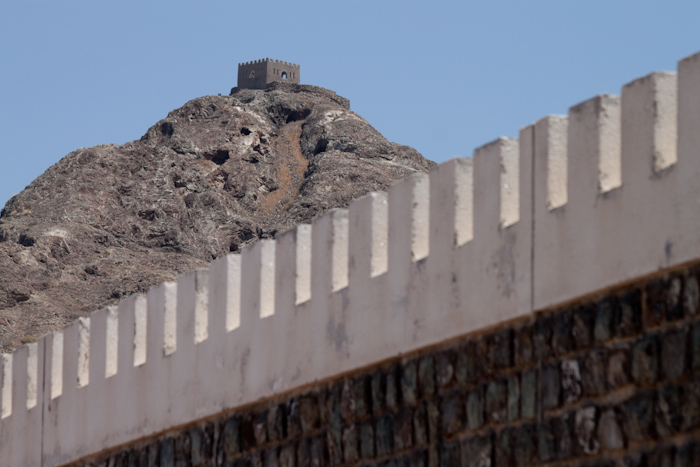
Forget what I said about the buildings being made out of plastic. Here’s a join in the city walls, filled in with polystyrene. It’s like they’re not even pretending they are historic.
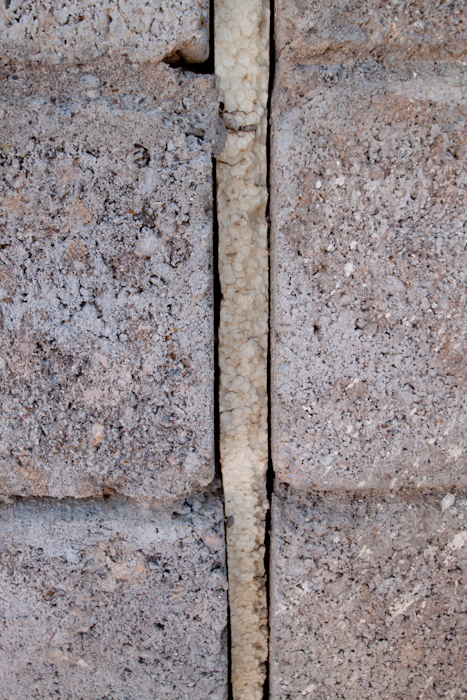
So, after an hour I worked out there was really nothing to do or see in Muscat. Before I took the taxi in I’d considered buying a drink, but decided to find something when I got to Muscat. I didn’t know there would be nowhere to buy a drink in Muscat. I didn’t know there would be nowhere to buy anything in Muscat.
Conversation with taxi driver:
“I’d like a taxi ride back to Mutrah.”
“Twenty dollars.”
“It cost me five to get here.”
“But there are lots of taxis in Mutrah, and not so many tourists. Here in Muscat there are lots of tourists and only three taxis.”
“So when you drop me off, come directly back here.”
“Twenty dollars.”
At that point I walked away, hoping one of the drivers would say “Ten dollars.” I wasn’t actually planning to walk back to Mutrah, considering the burning heat of the sun.
Then I worked out a bus parked near by was returning directly to the cruise ship. The tour escort, who also worked as a lecturer on the ship, recognized me from my show and said “We have two spare seats on the bus, just get a lift back with us.”
So I did.
On the bus I discovered the most impressive thing to see was the Grand Mosque. It’s one of the biggest in the world, and it’s crammed full of interesting and expensive furnishings. Much more impressive than Buckingham Palace, according to one couple. Unfortunately I had to take the other passengers’ word for it as I didn’t have time then to go check it out myself.
So that was my day in Muscat and Mutrah. Just so you know, it’s not really worth visiting.
